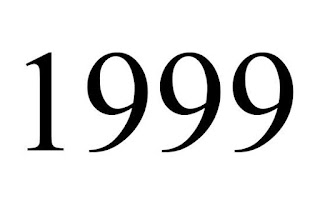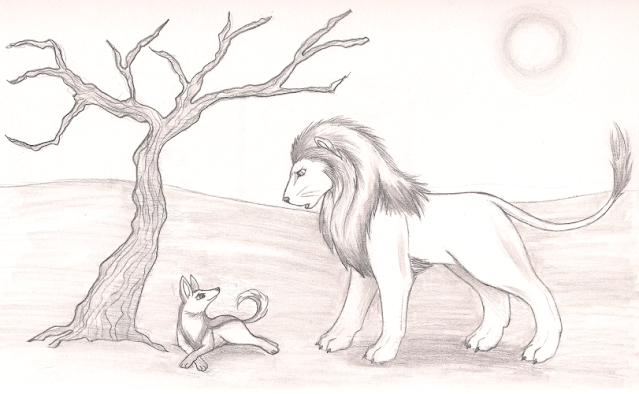Themes of 'A Mother and a Murder'
Some of the themes that helped me to create
the story of a mother wrongly accused of murder…..
I needed to look
back at the various points in my own life which have prompted me to think about
situations where different feelings, particularly joyful ones, had to be
brought out during melancholy times. This was required when I had to add information
on the joyful past of a character whose current situation was extremely tragic.
This was required in order to create a background for a family which was torn
apart by the murder of one of its members. This I found rather difficult to do
as I had to think from the point of view of the main character who was not only
dealing with the loss of her husband but also with the challenges of carrying
on without him. I related this to the movie “You’ve Got Mail” where Meg Ryan’s
character is forced to carry on after the loss of her mother and her bookshop.
I also thought that the story required a
backdrop of the family prior to the murder. For this I realised that the best
way would be to use flashbacks. This is often a motif in some films when
something is not revealed chronologically and is told through flashbacks which
slowly build up to where the film began. I thought this was a good technique to
use at this stage, even though flashbacks are not common in crime and detective
stories.
In my understanding of Reflective Practice, there are two ways of performing it. One is known as ‘Reflection in Action’ (Argyis & Schon, 1978) or RIA which means to reflect on your work as you create it in the present tense.
In my understanding of Reflective Practice, there are two ways of performing it. One is known as ‘Reflection in Action’ (Argyis & Schon, 1978) or RIA which means to reflect on your work as you create it in the present tense.
The second method of reflective practice is
called ‘Reflection on Action’ (Greenaway, 1995) which means to reflect after
the practice has occurred in a space in the future. It is a simple process of
completing one’s work and reviewing it after it is completed and making changes
as one feels necessary. (Please refer to attachment)
Clearly I have used the ‘Reflection On
Action’ (ROA) method of reflective practice most of the time. I also believe
that, even though I may not have realized it, there would be an element of ‘reflection
in writing’ (RIA) as well. Over time as I become more aware of the process of
creating a piece of written work I might be able to use both methods of
reflective practice more consciously.
At this stage I thought that it would be
good to make a connection with the real life tale of Betty Anne Waters whose
story was told in the movie ‘Conviction’ about her devotion to free her wrongly
convicted brother by studying to become a lawyer. This required a
transformation in the police officer Jimmy Smith into a stronger central
investigator such as Sherlock Holmes (Arthur Conan Doyle) and Charlie Chan
(Earl Derr Biggers). I needed to ‘twist’ the circumstances and the work of
Smith to enrich his character. To me this character needed to be as important
as his sister was. Even though, once Hannah was sent to prison, it diluted her
presence for a while and the story seemed to focus on Jimmy Smith and told from
his P.O.V. To Smith, even if he did not have any assistance or support, he
would do anything to prove his sister innocent because he had faith in her and
would go to any lengths to free her.
Former boxer, Rubin Carter who spent 18 years in prison for a crime he did not commit often says during interviews that he is not bitter for having spent so much time in prison. He believes that only when he filled his heart with love was he released because he believed it was hate that led him to prison. Every so often when a person has been wrongly convicted, they see no point in being bitter over it. Even though they do maintain their innocence, they become almost spiritual and seem to find a deeper meaning for their life. This has been seen in real-life stories of the wrongly convicted people who have later been found not guilty. I was keen to bring this aspect into the story as it has a very powerful and true message, that it is love and positive thought that releases a person’s burden.
Former boxer, Rubin Carter who spent 18 years in prison for a crime he did not commit often says during interviews that he is not bitter for having spent so much time in prison. He believes that only when he filled his heart with love was he released because he believed it was hate that led him to prison. Every so often when a person has been wrongly convicted, they see no point in being bitter over it. Even though they do maintain their innocence, they become almost spiritual and seem to find a deeper meaning for their life. This has been seen in real-life stories of the wrongly convicted people who have later been found not guilty. I was keen to bring this aspect into the story as it has a very powerful and true message, that it is love and positive thought that releases a person’s burden.
This was probably the most uplifting part
of the story before the ending where I decided to give this attitude to Hannah
during her time in prison, showing how she spent her time walking in the light
of God rather than feel miserable. I also felt that she had to show why she
believed herself to be in prison. This I thought would create a surprising
effect and it was her brother who was amazed by her change. To me this probably
allowed me to give her an opportunity to tell her brother with more confidence
about how her husband had been in the weeks prior to his death and how he could
have confided with her about what was bothering him.
I also felt that I needed to add to the dark and sinister tone and atmosphere, that it deserved. Post Bryce’s death and following Hannah’s arrest, I knew I had to go into further detail regarding the investigation into the faulty evidence based on the missing weapon that killed Bryce with Smith needing to seek out the weapon (If it were hidden) in every possible place which could be even the remotest of possibilities. It was here that I used a tone from the film ‘Kiss the Girls’ based on the Alex Cross Novel of the same name by James Patterson (1995) where Cross is constantly feeling that he is being watched during his investigation.
I also felt that I needed to add to the dark and sinister tone and atmosphere, that it deserved. Post Bryce’s death and following Hannah’s arrest, I knew I had to go into further detail regarding the investigation into the faulty evidence based on the missing weapon that killed Bryce with Smith needing to seek out the weapon (If it were hidden) in every possible place which could be even the remotest of possibilities. It was here that I used a tone from the film ‘Kiss the Girls’ based on the Alex Cross Novel of the same name by James Patterson (1995) where Cross is constantly feeling that he is being watched during his investigation.
To bring about a sense of reality to the
seemingly paranormal incidents, I decided that this, like the tapping at the
door before Hannah’s arrest would be revealed by Alice as something that she had
done in her failed attempts to confess her crime.
In order to bring about a complete turn of events in order to resolve the crime, I was inspired by the real-life story of Jeffrey Scott Hornoff, a cop who was jailed for six years, until the real killer who could not hold onto his guilt any longer confessed to the crime that Hornoff was blamed for (Smith, K. 2005)
By making Alice confess to her crime, it
naturally showed that she was the kind of person who actually felt shame and
had remorse for things she would later regret. That she was willing to
take/accept responsibility for her actions and was also ready to accept any
consequence
During the process of creating this electronic
asset, in my case the crime story, I believe I have endeavoured to use my
experience of co-curricular and extracurricular learning that have come
together to help me in this project. In reflecting on the last 4 weeks, I have
been fortunate to receive comments which have pushed me to think differently
and onto pathways that I would not have ventured into otherwise. To be honest,
I was quite confused when left to choose the electronic asset for this course.
Having decided on the story, I was still very skeptical on how I would go about
it. There were times when I thought about it almost to the point of worry. At
these times, I would get inspired by stories that I had either read in the past
or while searching for material on the internet. This experience has been very
enriching and in hindsight rather enjoyable.
References
for the story
·
Argyris,
C & Schön, D (1978) Organization learning: A theory of Action
perspective. Reading. Massachuesetts: Addison Wesley
·
Beacon
Pictures. Jewison, N. The Hurricane. Feature
Film. Universal Studios. 1999.
·
Brown, D. Fleder, G. Kiss the Girls. Feature Film. Paramount
Pictures 1997
·
David, I. (N.A). How to write a
crime story. Retrieved from http://www.ehow.com/how_4687230_write-crime-story.html
·
Field, Syd (N.A). Three Act Structure. Retrieved from http://www.cod.edu/people/faculty/pruter/film/threeact.htmplead
·
Foxlight Search Pictures.
Goldwyn, T. Conviction. Feature Film.
Foxlight Search Pictures. 2010
·
Greenaway, R. (1995). Powerful Learning Experiences in Management
Learning and
Developlment. Thesis. University of Lancaster, Centre for the Study of Management Learning
Developlment. Thesis. University of Lancaster, Centre for the Study of Management Learning
·
Hirsch. J (2000). Hurricane: The Miraculous journey of Rubin Carter. Boston, New York: Houghton
Mifflin Company
·
Jupiter Entertainment. Chesler,
K et al. Snapped: Women who Kill.
Television Series. Oxygen Channel. 2004-12
·
Patterson, J (1995). Kiss the Girls.
Little Brown and Company. New York.
·
Smith, K (2005). The Story of the Wrongly accused and convicted
Jeffrey Scott Hornoff. Retrieved from http://caught.net/cases/hornoff.htm
·
Warner Bros. Ephron, N. You’ve Got Mail. Feature Film. Warner
Bros. 1998



Comments
Post a Comment